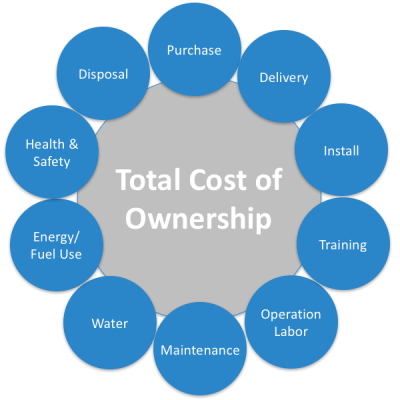ERP Software Total Cost of Ownership (TCO)
The total cost of ownership begins with the calculation of all direct and indirect costs associated with all Enterprise Resource Planning (ERP) lifecycle operations, from implementation to replacement. In most cases, when it comes to ERP, the total cost of ownership is calculated based on the purchase price, application and IT infrastructure needed to run the software. This can be very misleading, as the total cost of ownership of the ERP program is expensive, which becomes apparent after the implementation process.
The best way to control the total cost of ownership of an ERP program is to take reasonable measures at the outset, to assess the costs that may be incurred both at the beginning and throughout its life cycle, and to keep these costs under control. For TCO analysis, five aspects of the ERP life cycle play a crucial role: acquisition, implementation, operation, maintenance and replacement.
Click here to access thousands of ready to go ERP templates to help get you started.

Before implementation, choosing the appropriate ERP that suits the needs, size and style of the organization can significantly control the total cost of ownership. Functional analysis of the company, which can describe the current work clearly and in detail, identify problem areas, identify job weaknesses and identify areas that can be corrected or improved using IT, is instrumental in selecting the correct ERP. The “AS IS” document helps the organization choose the most suitable ERP, applying the total cost of ownership, reducing the costs associated with setting up and purchasing additional tools, training, and hiring IT professionals to install and manufacture software. Run without problems.
Determining the costs associated with the implementation process to calculate the total cost of ownership of the ERP program is relatively simple, as this process involves mainly direct costs. The cost of acquiring the same software, servers, clients, peripherals, network infrastructure, support and maintenance programs are among the costs that can be calculated. If the functional and technical analysis is performed by hiring an external consultant, this cost will also be included in the TCO analysis.
Operation and maintenance are essential cost estimation processes because these stages of the ERP software lifecycle require the high total cost of ownership. Both stages of the ERP life cycle are process-oriented and people-oriented, and therefore it is challenging to estimate hidden costs, however, at these stages, most indirect costs are in place, and direct costs are converted. Staff training, attracting a qualified and trained IT team for internal support, using the most appropriate implementation strategy, change management, the availability and cost of new updates, and comparative analysis of current operations are just a few of the centers that must be well studied to identify hidden transaction costs and maintenance phases.
The replacement cost to calculate the total cost of ownership of the ERP program is entirely based on assumptions, but can be made based on reliable facts by analyzing an existing scenario. Some of the factors that can help determine the approximate cost of replacement or avoid replacement are the stability of the ERP provider, software technology, vendor dependence on future support, uninterrupted operation of ERP software, disaster management, recovery management and identification of the most suitable replacement software. ERP guarantees can help calculate a very realistic replacement cost In the total cost of ownership analysis will be held.